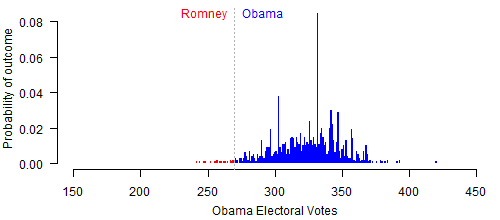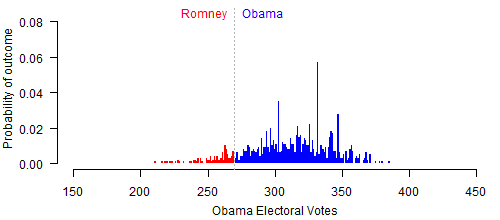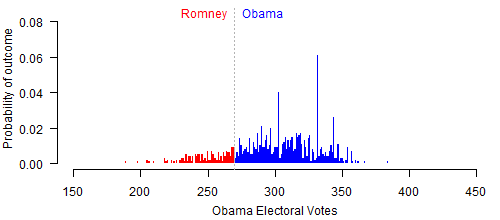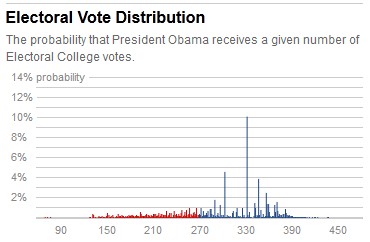Any forecasts about future events are necessarily out-of-sample inferences that are going to be heavily model dependent – particularly in the absence of a lot of historical data, which is the case here. I’ve created a statistical model that aims to apply existing political science research in a systematic, quantitative way, rather than reverting to intuition or other untested “mental models.” The reason I set up this site is to share what I’m seeing in the data, in the context of the model. There just aren’t a lot of opportunities to do this; presidential elections only come along every four years.
Political scientists don’t often venture into forecasting, but sometimes they do, and sometimes they’re wrong. One of the things that’s different about my approach is that it’s dynamic. If the historical factors I’m looking at right now turn out to be pointing to the wrong outcome, then my forecasts will update from new polls later. The model worked with the polls from 2008, but if it doesn’t work in 2012, I’ll use it as an opportunity to reexamine the modeling assumptions, see what went awry, and refine the approach for next time.
To reiterate, especially at this early stage in the campaign: All of the forecasts on this site depend on my (informative) priors. I describe how I came to them here. If you also trust those priors, then the probabilities I’m reporting follow from the model and the current polling data. I did my best to calibrate the uncertainty in those priors using polls from the 2008 election. The point is, the outcome probabilities shown on the site should not be treated as “universal.” With different priors, you’d get different forecasts. If you really don’t agree with my priors, don’t worry. The priors will matter less and less as the campaign goes on, and we see the results of more polls closer to Election Day.
And the model isn’t just for forecasting. It also gives estimates of the state-level trends in preferences for Obama vs. Romney. These trends depend on the polls and the model specification, almost not at all on the forecast priors. As a result, they should be accurate even if the forecasts they’re leading to aren’t.
A final note: Gallup reported one additional presidential approval poll for June, so I’ve made a minor adjustment to the baseline forecast. In their poll ending on 6/24, they had Obama at 46% approve to 48% disapprove, for a difference of -2%. Averaging this into their other June polls brings Obama’s net rating down from -0.4% to -0.8%. As a result, the Time-for-Change forecast falls slightly, from 52.7% to 52.6%. I’ll be using this as my baseline from now until the Q2 economic data are released.




